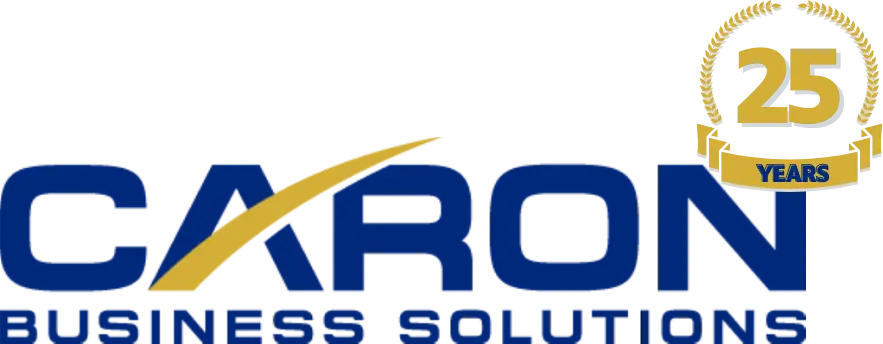In the last blog in this series, we talked about Caron’s approach to CRM Implementations, specifically System Design. In that blog, we talked about the six best practices for requirements gathering. In this blog, I will focus on another perspective – what role you, as the client, play in CRM Implementation project. Do you play a role in the success and failures of a CRM Implementation? The answer – a definitive yes; we succeed and fail as a team.
Let’s talk about four critical factors that, as a company, should think about before turning your mind to a go-live date; that shining beacon on the horizon where your staff can happily start using your brand new CRM system.
1. Speed – And when I mention speed, I mean “Slow down there Hotshot.”
You may think “not us, we have taken way too long as is, we have been surviving on spreadsheets for the last 15 years, and we’re losing control!”. If you agree with this sentiment, you should start the process ASAP, but don’t forget it’s ready, aim, shoot. Not the other way around.
Although the reasons clients approach us regarding CRM are vast, there is a common thread; clients suddenly see value in a CRM system and want to start leveraging it immediately.
The environment of CRM is one that is always adapting and with cloud technology, it is an environment that promotes a quick call or online application, credit card payment and boom, your CRM is live! Okay, but is it? Are the users set up? Who has access to what? Are you going to divide visibility by product line or territory? How closely does the out of the box functionality match your current process?
If you’re thinking that you can start using a system as is and fix it over time, I will encourage you to rethink your approach. CRM does not need to be overly complicated, but data, and specifically large amounts of data, can be. Get your system set up correctly out of the gate so you are not paying for fixes down the road that will cost in both time and money.
You say “Okay, I get it. Let’s not rush the processes. We need to slow down. What do we do to move forward efficiently?” Let’s find out with #2.
2. Requirements – The Big One
Your team is more knowledgeable about your current process, pain points and strengths than any independent consultant out there; use that to your advantage. Let your team help determine the requirements, not the software choice. Have kick-off meetings to decide what you are looking for in a CRM system and then branch out to vendors to see which best meets those needs. Starting by trying to modify your process to match the functionality of the specific software is the recipe for a rough long-term CRM relationship.
How do you do this? Check out the Six Best Practices for Requirements Gathering in our last blog in this series as a great start. I also recommend one of the many books written on this subject, specifically Mastering Requirements Process Getting Right.
Once you have this information, you have created your project scope. Next, you can work on building a set of detailed requirements and timelines that will make up your plan.
3. Scope – Laser in
What you want is a clear idea of the Scope of your project, what you do not want is “Scope Creep.”
Scope Creep means you start with an idea and a budget, and your concept keeps evolving which, by necessity, changes the scope of the project and, consequently, has a negative impact on the budget or timeline.
If you ask a contractor to quote on building a rancher, then halfway through you decide it needs to be a three-story home, you shouldn’t be surprised to find a much higher bill once you finally get keys to that new home.
No one likes Scope Creep. Clients do not want to impact the original budget or timeline, and Consultants do not like dealing with clients who are upset about budget or schedule. That’s good news. Our interests are aligned. So what do we do to prevent this?
- Have clear requirements Hey, this is what we talked about in #2! You’re already on your way.
- Guard against “Gold Plating”
This is a tendency to enable features or build functionality because it’s technically possible. Here is a simple hint, if your question is “Can it also do this?” we should be asking you if it’s a must for you to reach your overall goal. If the answer is no, let’s circle back and chat about those changes as a possible future phase. - Project Management
You will find that projects have a lot of moving parts, technology, and people that all need to be aligned to meet objectives. Caron will always provide project management services. However, our most successful projects have been the ones in which the client has also provided project management resources. - Learn to say No
Despite carefully determining your requirements in step 2, you may face pressure from within your company to change certain aspects or functionality part way through the processes. We recommend saying no! We can always circle back and talk about those changes for a phase 2 after the company has had a chance to adapt to your CRM implementation.If you just cannot say “no” to a critical request, I recommend taking one of the following approaches- If something new goes in, make sure you understand that something must come out or the budget must be increased.
- Price out the impact. Ask your consulting partner what the estimated impact of the change would be. This may defer the request and uncover that this was a “nice to have” and not a “need to have.”
4. User Adoption
We all know of companies that have been operating successfully for many years with no centralized CRM (You may even be one of those companies). They may be using a mixture of e-mails, local drives, spreadsheets and paper copies. How have they made it this far?
Here is a simple truth, they have made it this far with only rudimentary systems for one reason; everyone knows how the system works, and they follow the process. It might be complicated, it might be cumbersome, and it might be archaic, but people know how to work with what they have and, ultimately, everyone has adopted the processes. Everyone is pulling in the same direction at the same time and as a result, can make progress.
Imagine if you give that same team a brand new shiny CRM system. Success…Well, maybe.
If you have the best CRM platform in existence with the highest functionality with seamless integration to every possible program, it will bring you no value if your team does not adopt it. Zero.
The truth is, the best CRM out there is the one that meets your organizational goals and that your team will use. Meeting only one of these two objectives is a recipe for disaster.
For your organization to enjoy the benefits any new technology offers, your people have to use it. Choosing an intuitive system will help; nobody wants to learn a ten step process to file an e-mail. The most critical element to user adoption always comes back to requirements. If the CRM system you implement helps your team meet their objectives, and they can see the value in it as a business tool, then you will capture their interest in the project, and the user adoption will be high as a result.
So there you go. Implementing a CRM solution can be a game changer and can help you move to the next level in your growth. Keep your responsibilities in mind before starting, and you will maximize your chance of success.




